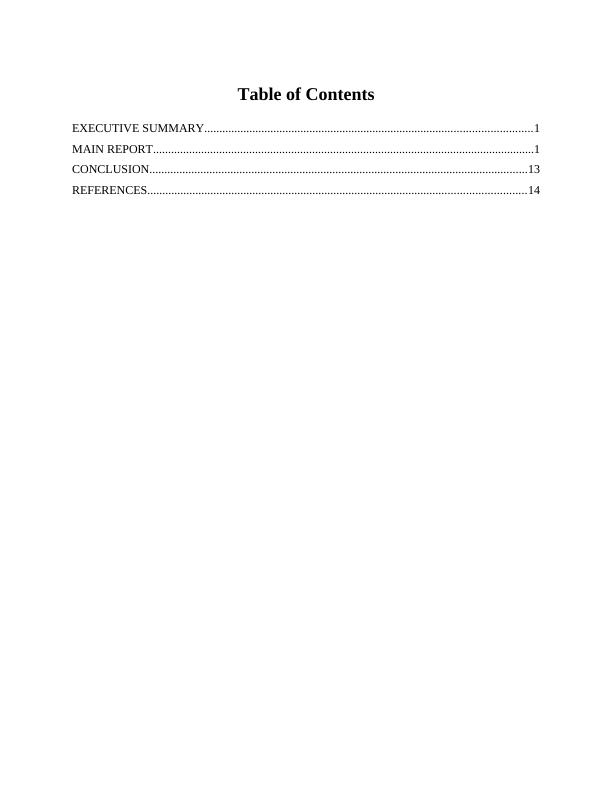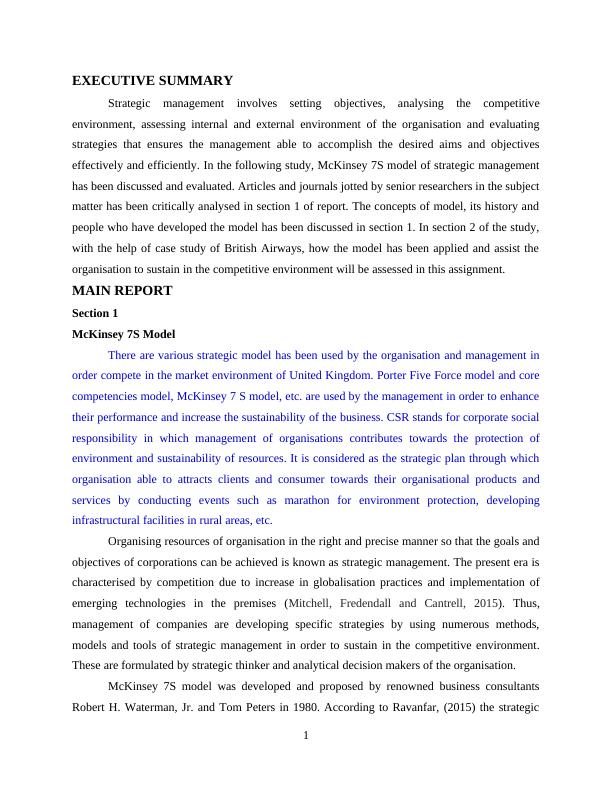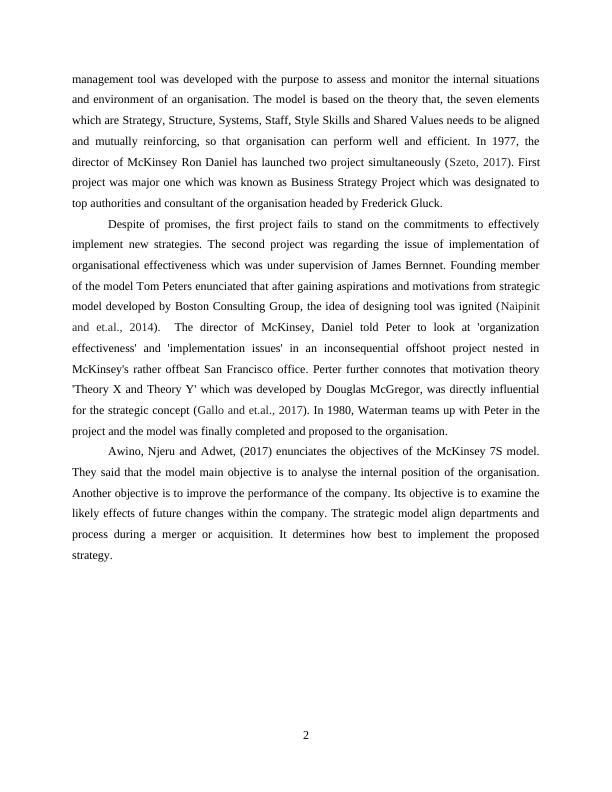McKinsey 7S Model of Strategic Management : Report
Added on 2020-07-22
18 Pages5358 Words61 Views
STRATEGICMANAGEMENT

Table of ContentsEXECUTIVE SUMMARY.............................................................................................................1MAIN REPORT...............................................................................................................................1CONCLUSION..............................................................................................................................13REFERENCES..............................................................................................................................14

EXECUTIVE SUMMARYStrategic management involves setting objectives, analysing the competitiveenvironment, assessing internal and external environment of the organisation and evaluatingstrategies that ensures the management able to accomplish the desired aims and objectiveseffectively and efficiently. In the following study, McKinsey 7S model of strategic managementhas been discussed and evaluated. Articles and journals jotted by senior researchers in the subjectmatter has been critically analysed in section 1 of report. The concepts of model, its history andpeople who have developed the model has been discussed in section 1. In section 2 of the study,with the help of case study of British Airways, how the model has been applied and assist theorganisation to sustain in the competitive environment will be assessed in this assignment. MAIN REPORTSection 1McKinsey 7S ModelThere are various strategic model has been used by the organisation and management inorder compete in the market environment of United Kingdom. Porter Five Force model and corecompetencies model, McKinsey 7 S model, etc. are used by the management in order to enhancetheir performance and increase the sustainability of the business. CSR stands for corporate socialresponsibility in which management of organisations contributes towards the protection ofenvironment and sustainability of resources. It is considered as the strategic plan through whichorganisation able to attracts clients and consumer towards their organisational products andservices by conducting events such as marathon for environment protection, developinginfrastructural facilities in rural areas, etc. Organising resources of organisation in the right and precise manner so that the goals andobjectives of corporations can be achieved is known as strategic management. The present era ischaracterised by competition due to increase in globalisation practices and implementation ofemerging technologies in the premises (Mitchell, Fredendall and Cantrell, 2015). Thus,management of companies are developing specific strategies by using numerous methods,models and tools of strategic management in order to sustain in the competitive environment.These are formulated by strategic thinker and analytical decision makers of the organisation. McKinsey 7S model was developed and proposed by renowned business consultantsRobert H. Waterman, Jr. and Tom Peters in 1980. According to Ravanfar, (2015) the strategic1

management tool was developed with the purpose to assess and monitor the internal situationsand environment of an organisation. The model is based on the theory that, the seven elementswhich are Strategy, Structure, Systems, Staff, Style Skills and Shared Values needs to be alignedand mutually reinforcing, so that organisation can perform well and efficient. In 1977, thedirector of McKinsey Ron Daniel has launched two project simultaneously (Szeto, 2017). Firstproject was major one which was known as Business Strategy Project which was designated totop authorities and consultant of the organisation headed by Frederick Gluck. Despite of promises, the first project fails to stand on the commitments to effectivelyimplement new strategies. The second project was regarding the issue of implementation oforganisational effectiveness which was under supervision of James Bernnet. Founding memberof the model Tom Peters enunciated that after gaining aspirations and motivations from strategicmodel developed by Boston Consulting Group, the idea of designing tool was ignited (Naipinitand et.al., 2014). The director of McKinsey, Daniel told Peter to look at 'organizationeffectiveness' and 'implementation issues' in an inconsequential offshoot project nested inMcKinsey's rather offbeat San Francisco office. Perter further connotes that motivation theory'Theory X and Theory Y' which was developed by Douglas McGregor, was directly influentialfor the strategic concept (Gallo and et.al., 2017). In 1980, Waterman teams up with Peter in theproject and the model was finally completed and proposed to the organisation. Awino, Njeru and Adwet, (2017) enunciates the objectives of the McKinsey 7S model.They said that the model main objective is to analyse the internal position of the organisation.Another objective is to improve the performance of the company. Its objective is to examine thelikely effects of future changes within the company. The strategic model align departments andprocess during a merger or acquisition. It determines how best to implement the proposedstrategy. 2

End of preview
Want to access all the pages? Upload your documents or become a member.
Related Documents
Analysis Strategies of Hilton Hotel - Case Studylg...
|20
|4010
|33
Global Business Environment- SASOL Limitedlg...
|8
|2157
|297
Entrepreneurial Strategy Framework PDFlg...
|14
|4424
|29
Global Business Environment: Analysis of ASOL's Structure, Culture, Governance, and Expansion Routeslg...
|11
|2615
|381
Global Business Environment: Analysis of ASOLlg...
|11
|2615
|63
Global Business Environment (GBE): An Overviewlg...
|9
|2569
|410
